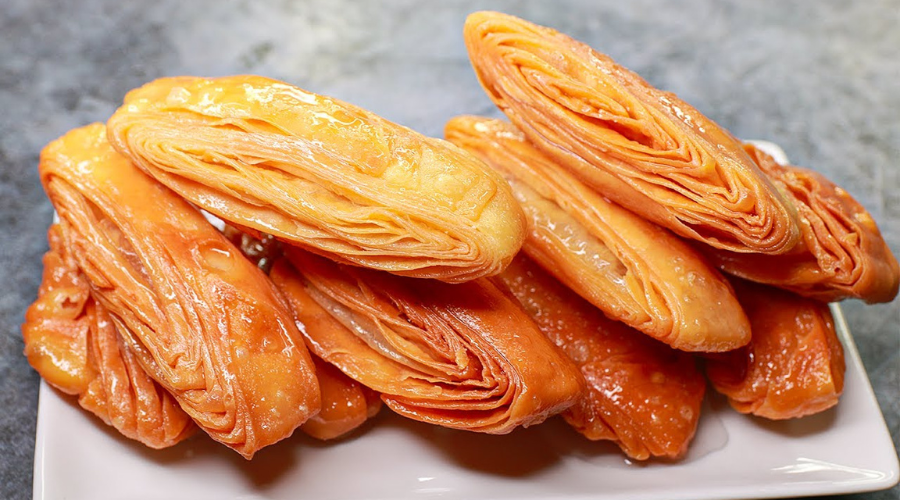Silao Khaja: A GI-Tagged Flaky Delight with Roots in 320 BCE
Silao Khaja, Bihar's ancient flaky decadent sweet, dating back to 320 BCE. It is a golden delight that blends tradition and flavours across generations.
Sweets are more than just sugar and spice—they are storytellers. They bind us to tradition, evoke nostalgia, and offer the comforting warmth of moments shared across generations. Silao Khaja is one such sweet, offering a delicious glimpse into the rich cultural history of Bihar and Odisha. With its unique textures and flavours, this seemingly simple dessert carries a legacy shaped by multiple origins and centuries of tradition.
This crunchy, golden treat is made with flour, sugar, and ghee, and is often described as a deep-fried pastry or compared to Turkish baklava. Its iconic spiral shape, glistening with sugar syrup, resembles a golden-hued conch shell—both beautiful and appetising.
Gastronomic History of Silao Khaja
Far from being a calorie-dense indulgence, Khaja was once hailed as “a food for power sustenance” by Chanakya in the Rigveda and Arthashastra. That’s how timeless its legacy is. Tracing its roots back to around 320 BCE, several stories speak of its origin. One prominent version attributes its invention to Silao, a town in Bihar that gives the sweet its name. Believed to have originated in the Magadh region—now parts of Bihar and eastern Uttar Pradesh—Silao Khaja reflects the area’s rich culinary heritage. Located in Nalanda district, Silao is closely tied to the dessert’s legacy and Bihari cuisine.
In Bihar, no festival is complete without a sweet treat, and Silao Khaja holds a special place. Associated with celebration and tradition, it has become more than just a dish—it’s an emotion. Its rich flavour and delicate craftsmanship have helped it gain popularity beyond Bihar’s borders.
A Tussle of Theories
Silao Khaja’s culinary journey extends to both Nalanda and Jagannath Puri. Legends say the Mauryan Empire cherished it, and even Gautam Buddha was offered this sweet while travelling through the region. The people of Odisha, especially in Jagannath Puri, have embraced it wholeheartedly. Amid beach stalls selling prawn chops and pakoras, Khaja remains a standout. From Bada Danda (Grand Road) to the entrance of the famed Lord Jagannath temple, it is a staple, deeply woven into the city’s religious and cultural identity.
However, regional variations abound. In Odisha and Andhra Pradesh, the pastry sheets are thicker, resulting in a harder texture. In contrast, the Bihari version is softer and chewier. The sweet is also associated with different religious traditions: in Odisha, it’s offered during the Rath Yatra, while in Andhra Pradesh, it is served dry on the outside and soaked in syrup inside.
Savour the Sweetness

From Bihar to Odisha, Andhra Pradesh, and even Karnataka, Khaja transcends regional boundaries. In 2018, Silao Khaja was awarded the GI (Geographical Indication) tag, recognising its unique heritage, authentic flavour, and enduring appeal.
Prepared with patience and care, this dessert relies on simple ingredients but complex craftsmanship. From kneading the soft dough to layering it for that perfect crispness, every step is vital. Fried to a golden hue and soaked in sugar syrup, Silao Khaja is an exquisite blend of flaky exteriors and chewy interiors—a sweet passed down through generations, holding tight to its traditional charm.